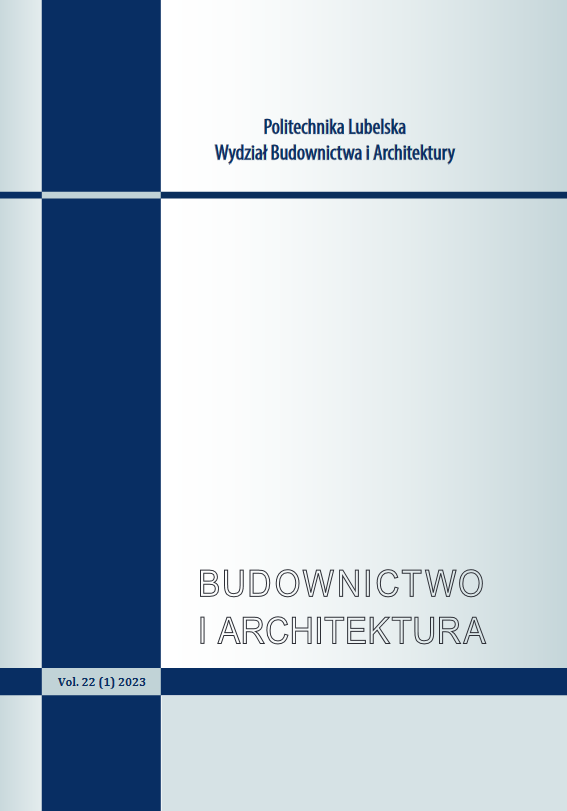Numer 22/1 (2023)
|
Spis treści
Strony
Pobierz
|
|||||
|
Andrzej Borkowski,
Piotr Nowakowski Use of applications and rendering engines in architectural design – state-of-the-art
DOI: https://doi.org/10.35784/bud-arch.3327
5 – 14
|
|||||
|
Słowa kluczowe building information modelling |BIM application |visualisation software |real-time rendering |AEC industryStreszczenie Computer methods in the AEC (Architecture, Engineering, Construction) industry are constantly evolving, mainly towards BIM, and the design process itself within an investment project focuses mainly on documentation. Visualisation or animation are optional elements, mostly done for sales purposes. Photorealism and the quality of created visualisations influence the impressions of the recipient, and the emotions evoked can determine a purchase or investment. As a rule, designers pay great attention to the visualisations they create, but they are not always aware of the solutions available on the market in this respect. In recent decades, rendering engines based on so-called real-time rendering have developed rapidly. The aim of the study was to provide a deep review of existing 3D modelling and visualisation solutions in terms of their popularity, applicability and advantages and limitations. The focus is on applications working with BIM software, which is widely used in the AEC industry. The paper attempts to compare the applications, lists their advantages, disadvantages, benefits and limitations in their use. The conclusions, sometimes subjective, can be useful for the whole community of architects and engineers, related to space design. The results of the review indicate the increasing popularity of 'real-time' solutions, which are displacing 'offline' solutions. INFORMACJE O AUTORACH Piotr Nowakowski Politechnika Warszawska |
|||||
|
Andrzej Tokajuk
Optimization of the functional concept of the minimum apartment – a study on a selected example. The role of functional details
DOI: https://doi.org/10.35784/bud-arch.3362
15 – 24
|
|||||
|
Słowa kluczowe apartment |flat |functional concept |layout |detailStreszczenie The article shows the study about functional concepts of a small apartment. For the research the author has chosen 27,3 m2 apartment from the estate „Za Żelazną Bramą” in Warsaw. The study works on the optimization of minimum apartment model for 1-2 occupants that could meet contemporary standards. The study has proved that the original layout of the apartment can be improved to bring it closer to contemporary requirements. It turned out that improvements and changes mainly concerned dimensions and arrangement of the kitchen and bathroom. Theliving space could also be modified – good results have been obtained by implementing innovative details. The last simulation performed in the research (purely hypothetical) showed that the best optimization result could be obtained by slightly enlarging the basic plan of the apartment. The research was carried out as part of work No. WZ/WA - IA/4/2020 at the Bialystok University of Technology and financed from a research subsidy provided by the Minister of Education and Science. |
|||||
|
Agnieszka Lal,
Joanna Fronczyk, Małgorzata Franus Efficiency comparison of mixture formulations in the stabilisation/solidification of the loess silt contaminated with zinc in terms of mechanical properties
DOI: https://doi.org/10.35784/bud-arch.3407
25 – 35
|
|||||
|
Słowa kluczowe loess silt |alternative binder |activator |unconfined compressive strengthStreszczenie The effectiveness of various types of binders in stabilizing/solidifying (S/S) contaminated soils is strongly dependent on the type of soil and contaminants present. The literature abounds with studies of stabilisation/solidification of clayey soils, which provides a background for initial assumptions in design of the method application for contamination of this type of soil. However, studies on the stabilisation/solidification of loess silt contaminated with heavy metals are not available. Filling this deficiency is important in order to ensure the rapid adoption of the most effective remedies in case of contamination and their immediate implementation in the subsoil. This paper has enabled the determination of the most effective mixture among the examined for the remediation of loess silt contaminated with zinc in terms of compressive strength. Strengths were determined with the implementation of 30% Portland cement (2.63 MPa), 30% of fly ash-cement mixture (2.21 MPa), an incinerated sewage sludge ash-cement mixture (0.93 MPa) and mixtures in which cement was replaced by an MgO activator (0.18 MPa for fly ash and 0.63 MPa for incinerated sewage sludge ash). In addition, the determination of strength was carried out for samples containing a mixture of fly ash, activator and cement (0.26 MPa) and incinerated sewage sludge ash, activator and cement (0.26 MPa), with weight ratios of 5:4:1 respectively. In summary, fly ash and cement in a 2:1 ratio can be considered the most effective binding mix in terms of unconfined compressive strength increase. This research was supported by “Fly ash as the precursors of functionalized materials for applications in environmental engineering, civil engineering and agriculture” no. POIR.04.04.00-00-14E6/18-00 project carried out within the TEAM-NET programme of the Foundation for Polish Science co-financed by the European Union under the European Regional Development Fund. INFORMACJE O AUTORACH Joanna Fronczyk Szkoła Główna Gospodarstwa Wiejskiego w Warszawie |
|||||

